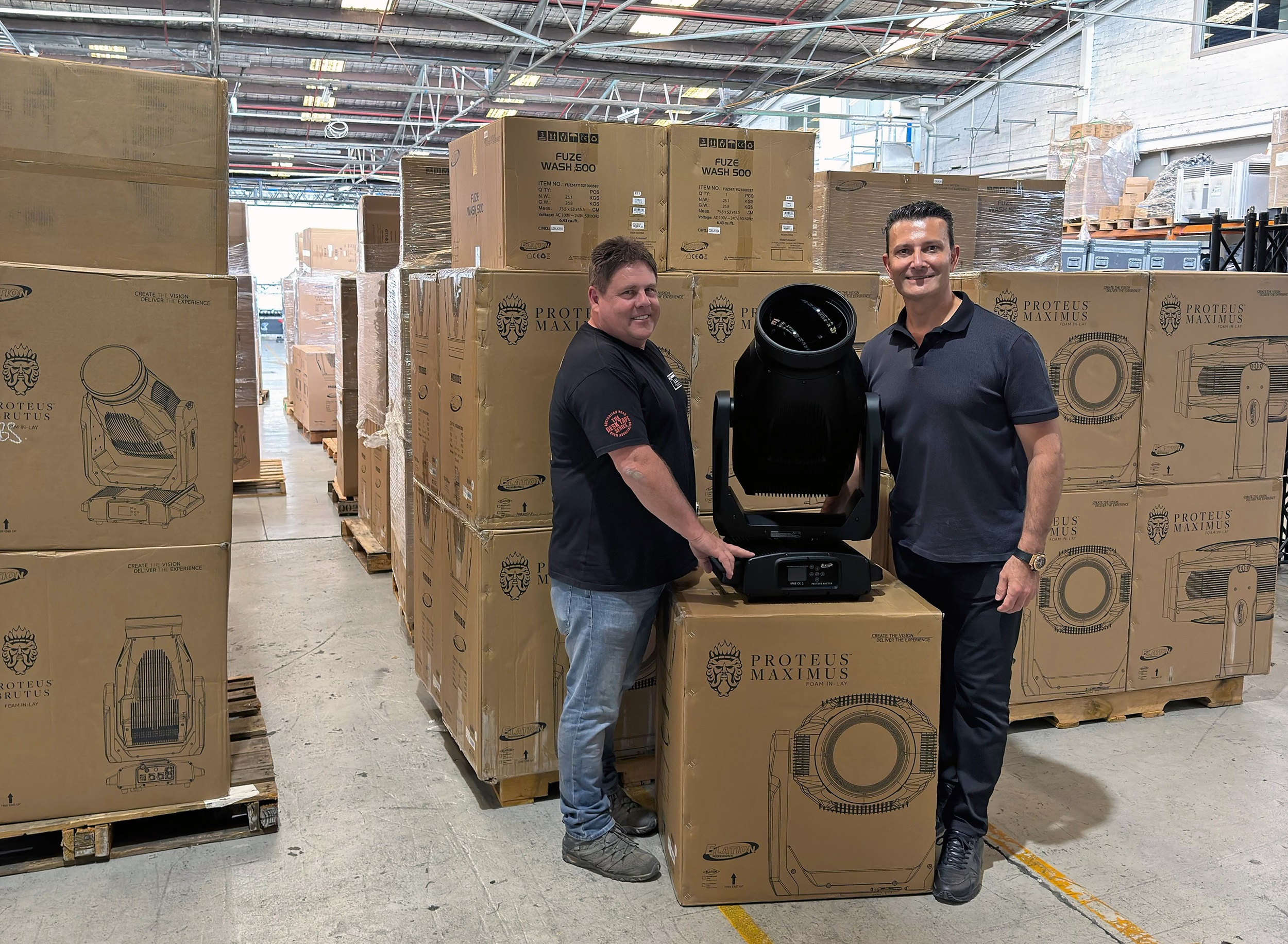LONDON – The new musical Charlie and the Chocolate Factory at the Theatre Royal, Drury Lane, has been the most eagerly anticipated opening in London’s West End this year. With direction by Sam Mendes, set and costume design by Mark Thompson, and lighting design by Paul Pyant, it is this summer’s golden ticket. City Theatrical worked closely with UK specialist lighting contractor Howard Eaton to realize the demanding wireless DMX requirements.
More details from City Theatrical (www.citytheatrical.com):
The production used SHoW DMX Neo Transceivers and Receivers, and it marked the first use of the new D2 and D4 Dimmers.
Martin Chisnall, also one of the show’s production electricians, took on the role of wireless DMX consultant. He was brought on board by Howard Eaton Lighting to oversee the design and installation of the SHoW DMX Neo wireless DMX system. Because of previous bad experiences with wireless DMX, the theatre had gained a reputation as a hostile environment in which to use radio DMX.
Even before the theatre’s previous show, Shrek, had closed, Martin conducted a 2.4GHz WiSpy survey onstage to discover what other competing wireless networks existed, and if there were any particular causes for concern. The survey results revealed over 25 competing Wi-Fi networks.
For Charlie, careful frequency management was implemented by limiting the use of personal, non-show critical wireless networks and gathering information on other departments’ show critical wireless needs.
Charlie uses four wireless DMX universes. For the majority of the show the wireless elements all fit in to one universe, but for one scene in Act II, Willy Wonka’s Inventing Room, another three universes are required simultaneously. These drive two arrays of Color Kinetics RGB LED nodes, through which chase sequences are run. This is always a tough test for any wireless DMX system, with the LED arrays mercilessly revealing any errors in the DMX data. The Neo system performed perfectly.
Because of the need to have four universes broadcast simultaneously, care was taken in the choice of frequency bandwidths and hopping patterns to ensure the four transmitters did not interfere with each other. Two of the transmitters were set to broadcast in the lower end of the available frequency spectrum, while the other two were set to broadcast in the upper end of the spectrum.
Furthermore, within each pair of transmitters, one was set to an odd numbered hopping pattern, while the other was set to an even numbered hopping pattern to ensure the transmitters could never clash.
Directional panel antennas were used on the transmitters to ensure maximum signal was directed toward the stage, and to help reduce spurious interfering radio reflections from around the theatre auditorium. The transmitters and associated antennas were mounted on the circle front lighting position, providing an elevated and uninterrupted view of the stage.
At the receiving end of all this wireless DMX is a wide variety of scenic elements, and costumes. The majority of pieces are trucks, either in floor tracks or free roving. Because of the impracticality of getting cables to them, they have to be battery powered and wirelessly controlled.
Light sources controlled include low voltage incandescent lamps, along with reams of LED tape in white, RGB, and RGBW varieties. Dimming was provided either by City Theatrical Dimmers or Howard Eaton ‘XT cards’ and 600-watt high power dimmers.
The City Theatrical D2 and D4 Dimmers are small but manage to pack a lot of functionality. They are either two or four channel low voltage dimmers with built-in SHoW DMX Neo receivers.
The lighted costumes (10 costumes in one scene alone) use Electroluminescent (‘EL’) tube sewn in to the fabric and accessories. Each costume includes a small Lithium Ion battery pack and a D2 dimmer to take care of the wireless DMX reception and EL dimming.
The costumes were delivered late and arrived in the theatre only just in time to go straight on to the stage for the technical rehearsals. Faced with 10 unconfigured D2s being worn in costumes by dancers onstage, and everyone clamoring to see them light up for the first time, wireless RDM proved its worth. Each costume was identified using the RDM Identify function, and the DMX address was set for the D2 Dimmers, even as the performers were rehearsing their choreography.
The wireless DMX on the show is not limited to just controlling lighting effects. Smoke machines are triggered, bingo machine balls blown, satellite dishes rotated, pop out hands popped, and entire “inventing” machines wobbled.
And finally, of course, no trip to The Chocolate Factory is complete without a ride in the glass elevator. Here too, SHoW DMX Neo plays its part in driving 48 circuits of Howard Eaton XT dimming and RGB tape, giving an ethereal glow to Willy Wonka and Charlie as they appear to fly magically around the stage.
As the show tag line says, “It has to be believed to be seen.”


